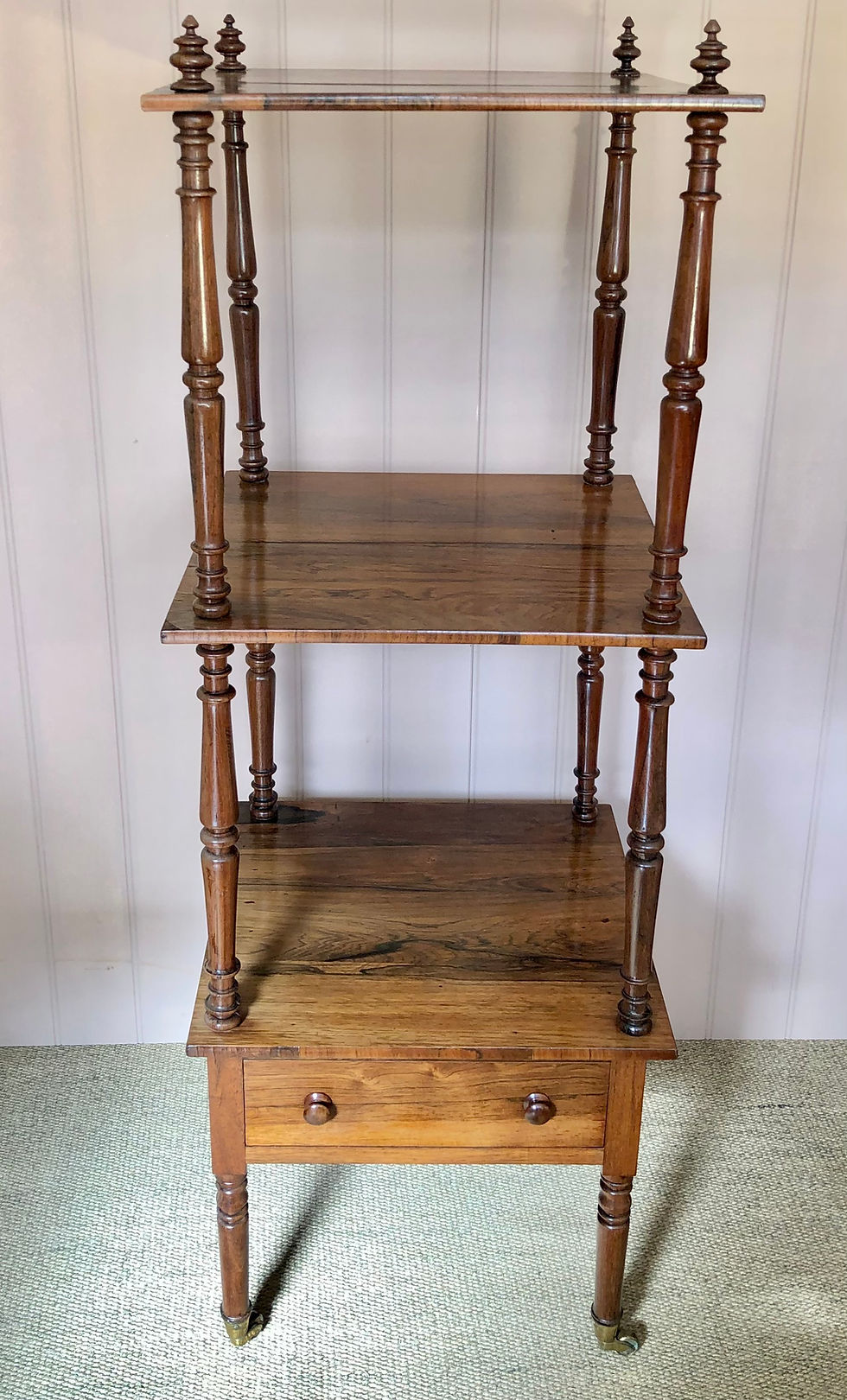Antique What-Nots or Étagères
- Louise Hodgins
- Jan 15, 2024
- 1 min read
Updated: Jan 30, 2024
Antique What-Nots or Étagères were made between the years 1790 -1900 approximately.
Design: A "what-not" is a term used to describe a piece of furniture with open shelves for displaying books and decorative items. What-nots became popular in the late 18th to 19th century.
These pieces of furniture are both practical and decorative, with elegant Georgian examples being more valuable than heavier Victorian versions.
Materials: Mahogany, rosewood and walnut.
Decoration: Largely the decorative turning of the uprights; many what-nots have a single drawer under the lowest shelf with small, turned knob handles; Victorian walnut examples may have burr veneered shelves.
Finish: French polish.
Availability: What-nots were often made in pairs; nowadays it’s rare to find them in pairs and they are usually sold singly. They are versatile antiques in the modern home and can be used as an elegant storage solution in living rooms and bathrooms as well as any room in the house.






Comments